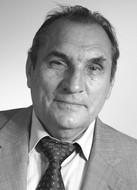Skill-specific speed building aspects in different sport disciplines
Фотографии:
ˑ:
Dr.Biol., Professor R.A. Abzalov1
Dr.Biol., Associate Professor R.R. Abzalov1
Dr.Biol., Associate Professor N.I. Abzalov1
PhD, Associate Professor А.М. Valeev1
PhD, Associate Professor S.V. Abzalova2
1Kazan (Volga region) Federal University, Kazan
2Kazan State Power Engineering University, Kazan
The study analyzes the bodily adaptation specifics in different sport disciplines versus athletes’ skill levels and speed qualities. The movement speed was tested by a laboratory computerized test system using standard tests. Subject to the study were skilled fencers, skiers and football players. It should be noted that fencing requires excellent speed qualities, and modern skiing sport requires high endurance, with both of the qualities being opposite. Football requires good speed-strength qualities and this was the reason for the footballers’ tests for comparative analysis.
We found that the higher are the sport skills the higher are the speed qualities, with the progress pace dependent on the specifics and intensity of the muscular loads i.e. the sport discipline; and identified the most sensitive periods in the speed building process.
We believe that the speed qualities and speed endurance rating tests and studies of the relevant progress mechanisms should give the means to assess their contributions to the competitive accomplishments.
Keywords: movement speed, fencers, skiers, football players, speed endurance, heart pumping function, hardware movement speed rating system.
References
- Abzalov R. R., Abzalov N. I., Khasanov T. K. et al Nasosnaya funktsiya serdtsa v kontekste povysheniya effektivnosti skorostnoy vynoslivosti sportsmenov [Heart pumping function within enhancement of speed endurance of athletes]. Teoriya i praktika fiz. kultury, 2016, no. 1, pp. 16–18.
- Abzalov R. R., Abzalov N. I., Abzalov R. A. et al Osobennosti skorostnoy vynoslivosti, umstvennoy deyatelnosti i sokratitelnoy sposobnosti serdtsa sportsmenov [Features of speed endurance, mental activity and cardiac contractility in athletes]. Teoriya i praktika fiz. kultury, 2016, no. 6, pp. 42–44.
- Bal'sevich V. K. Ontokineziologiya cheloveka [Human Ontokinesiology]. Moscow: Teoriya i praktika fizicheskoy kultury i sporta publ., 2000, 275 p.
- Balykin M. V., Antipov I. V., Karkobatov Kh. D. Sistemnye i organnye mekhanizmy adaptatsii pri fizicheskikh nagruzkakh v gorakh [Systemic and organ mechanisms of adaptation to physical loads in the mountains]. Patogenez, 2011, vol. 9, no. 3, pp. 17.
- Isaev A. P., Abzalilov R.Ya., Rybakov V. V. et al Modelirovanie v sisteme adaptatsii i upravleniya sportivnoy podgotovkoy [Modeling in athleteic training adaptation and management system]. Chelovek. Sport. Meditsina, 2016, vol. 16, no. 2, pp. 42–51
- Lubysheva L. I. Sovremenny tsennostny potentsial fizicheskoy kultury i sporta i puti ego osvoeniya obschestvom i lichnostyu [Modern value potential of physical culture and sports and ways of its social and individual mastering]. Teoriya i praktika fiz. kultury, 1997, no. 6, pp. 10–15.
- Rumyantseva E. R., Bordukova L. A., Strokin A. A. et al Sportivnaya podgotovka vysokokvalifitsirovannykh plovtsov s porazheniem oporno-dvigatelnogo apparata [Sports Training of Elite Swimmers with Spinal Cord Injuries]. Teoriya i praktika fiz. kultury, 2014, no. 4, pp. 5–7.



 Журнал "THEORY AND PRACTICE
Журнал "THEORY AND PRACTICE